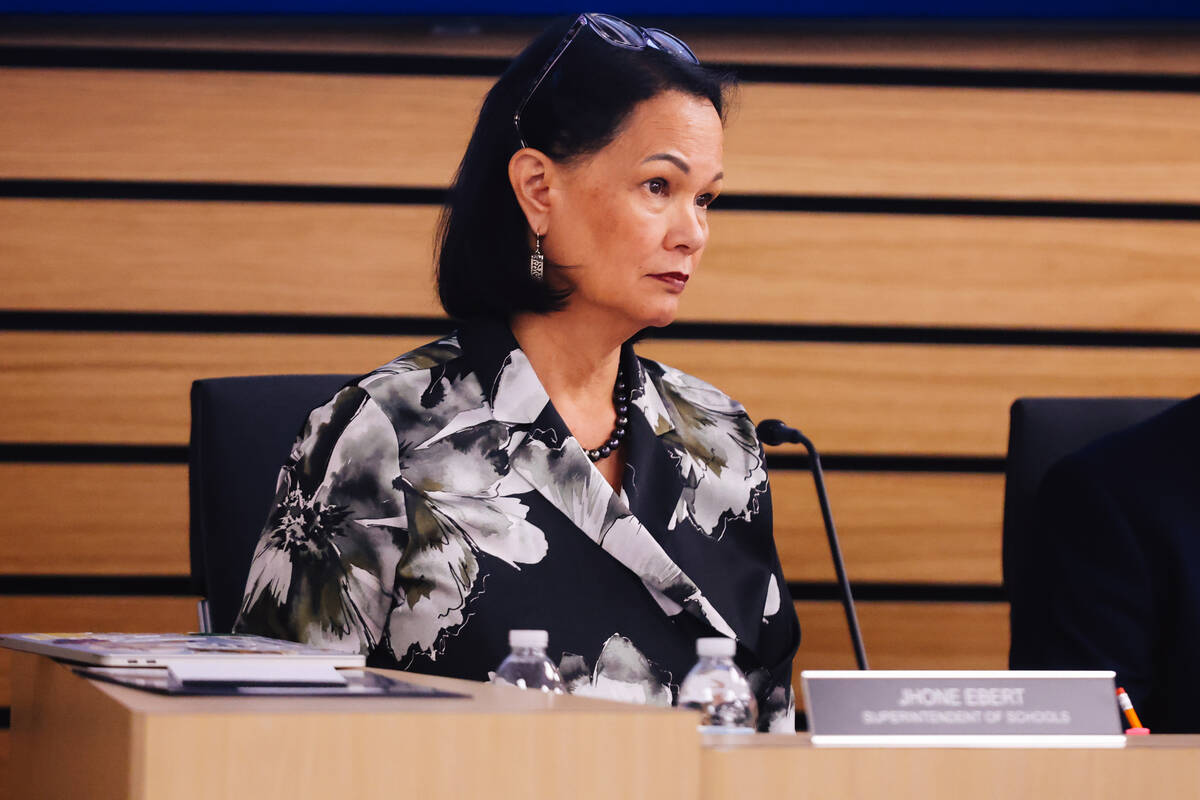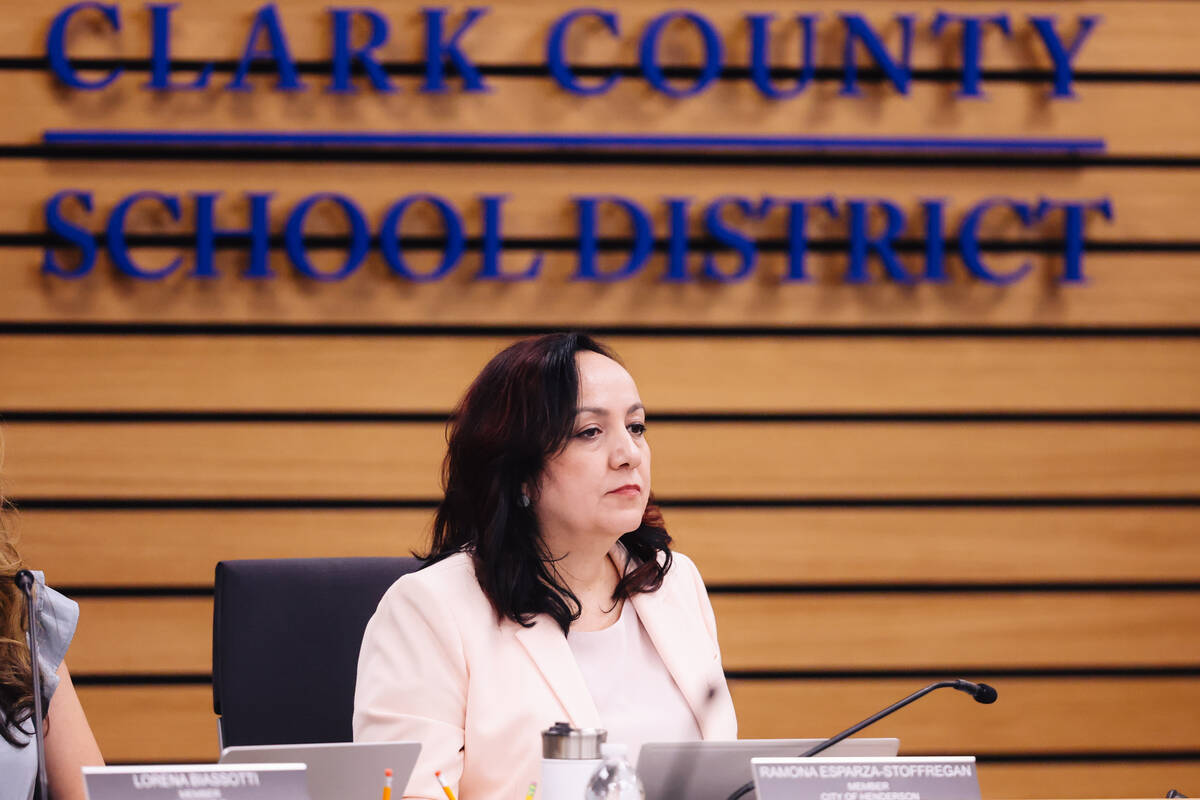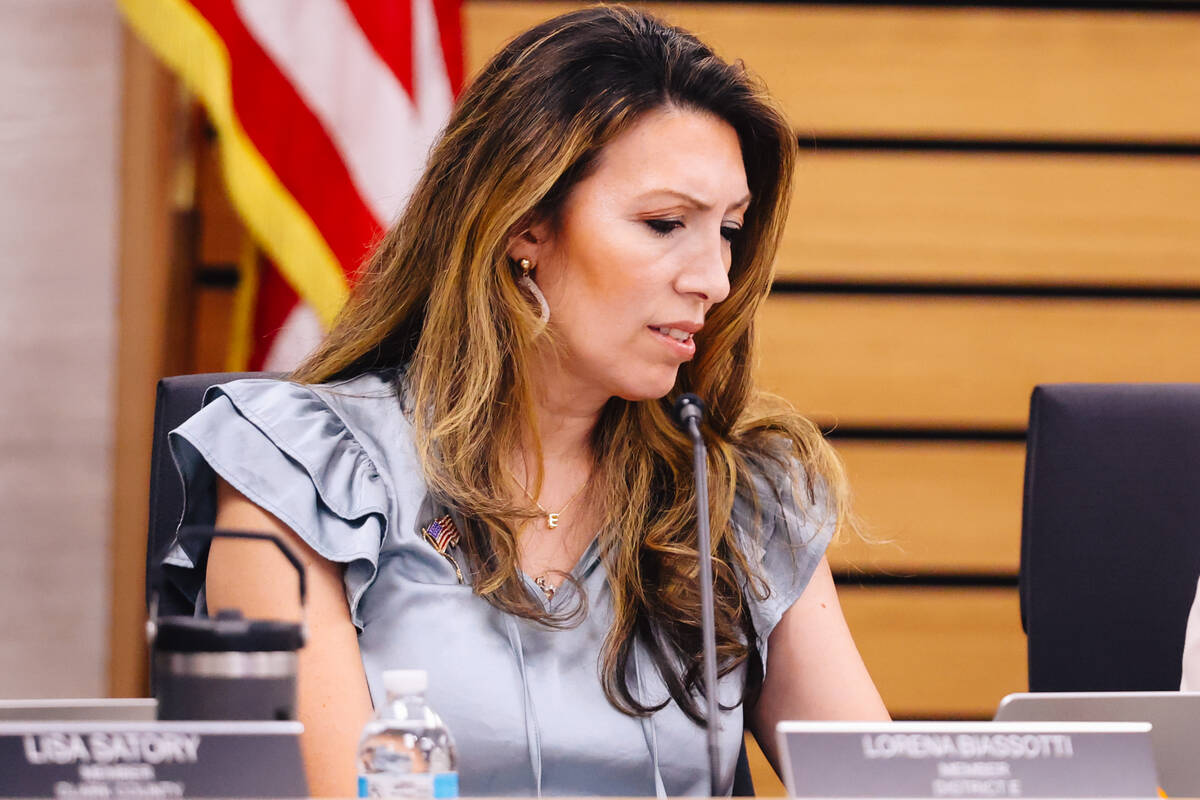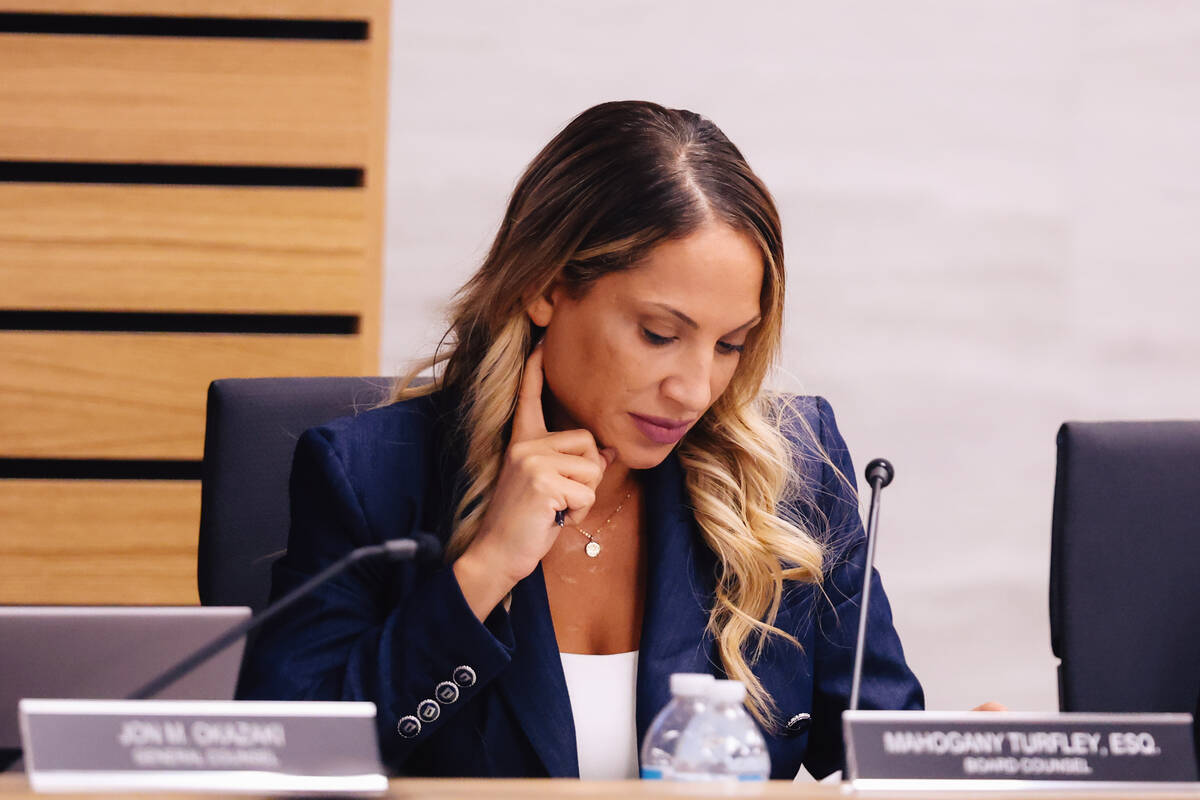Board set to vote on proposed contract for CCSD teachers. Here’s what the agreement entails
With a new school year underway, Clark County School District teachers are on the verge of obtaining a new contract that would usher in a host of changes for educators in the nation’s fifth-largest school district.
The Clark County School Board is set to vote Tuesday on whether to approve the proposed contract in a special meeting.
Superintendent Jhone Ebert announced the tentative negotiated agreement between the school district and the Clark County Education Association, the union representing teachers, on Aug. 9. In an emailed statement, Ebert said she was “incredibly proud” to have reached a tentative negotiated agreement ahead of the new school year.
The proposed contract was supported by 97 percent of union members who voted, according to an X post from the union.
Negotiated agreements between the union and the school district typically last two years. If adopted, the proposed agreement would be in effect through the 2026-2027 school year.
The district has 19,381 licensed personnel as of Aug. 1, most of whom are represented by the union. Classroom teachers make up the majority of those licensed personnel, a school district spokesperson said in an email.
Here’s a look at what’s inside the tentative agreement.
Teacher pay
The teachers union’s tentative negotiated agreement maintains the current rate of yearly teacher salary increases, places teachers who entered more specialized roles into new pay columns and offers additional compensation for teachers working in high vacancy schools.
Teacher pay, based on a salary schedule, is determined by the teacher’s educational attainment and years spent teaching. Educators can go up steps in the schedule by working for longer in the school district and can move columns by earning advanced degrees or other additional credentials.
Under the tentative proposal, the district would allocate $174.86 million to ensure teachers continue receiving step and column advancements through the next two years.
Funding for step and column advancements would come in part from Senate Bill 500, the legislation signed by Gov. Joe Lombardo in May which funds public education.
The tentative contract does not provide educators with cost of living salary adjustments or increased contributions to the Public Employees Retirement System that teachers use to save for retirement. Without these added benefits, Jeremy Heckler, president of the National Education Association of Southern Nevada, said many of his members say they’ll be taking home less money per year under the tentative contract.
“Getting another step doesn’t really cover the increase in expenses that’s going on for everybody,” Heckler said.
The proposal would also allow teachers who transfer to more specialized roles to get a new placement on the salary schedule. These roles include audiologist, counselor, school mental health professional, school psychologist and social worker.
The tentative contract also proposes establishing a salary review and adjustment process for educators affected by salary table compaction.
When the teachers union’s current agreement was signed in 2024, the new pay scale it created only applied to newer employees, causing some newer educators to earn as much as other teachers with more experience. This created compaction because educators with vastly differing levels of experience were earning similar salaries.
The new process would allow more experienced teachers affected by compaction to request a salary review so they are aligned with the most up-to-date pay scale. Educators who have taught in the district the longest would get priority in receiving a salary adjustment.
Filling classroom vacancies
New rules aimed at combating vacant teacher roles would also be established if the tentative agreement is approved.
The school district had approximately 504 classroom vacancies on the first day of school, a CCSD spokesperson said in an email. Of those vacancies, 163 were in special education roles.
For educators working in Title I schools identified as having high teacher vacancy rates, the tentative agreement would make them eligible for an additional $5,000 in compensation. The change would also apply to special education teachers.
If a Title I school’s teacher vacancy rate exceeds 7 percent for more than two years, employees would be eligible for additional compensation starting in the 2027-2028 school year under the tentative contract.
Educators teaching hard-to-fill subjects at Title I schools would also be eligible for the $5,000 compensation if their subjects are experiencing a critical labor shortage, a status determined by the school district and the teachers union. These subjects include English language arts, math, science and special education.
The additional compensation is contingent on funding from Assembly Bill 398. The legislation passed by the state in June appropriates $90 million total for this additional compensation through fiscal year 2026-2027.
Heckler, a teacher librarian at J. T. McWilliams Elementary School, said he has worked at Title I schools in the district for 19 years. He said he believes the additional compensation will help the school district retain teachers at high vacancy schools, but worries how schools would be affected if money for the initiative runs out.
“You’re going to give them more money, which I think definitely helps. I’ve benefited from that, many of my colleagues here at McWilliams have … as long as the money stays there,” Heckler said.
Other additions
The tentative agreement includes a number of changes aimed at improving teacher health and well-being.
If approved, the contract would increase the amount the school district pays into the Teachers Health Trust, a program which offers educators health insurance.
Currently, the district pays $848.31 per employee each month into the trust. The proposed contract would increase that amount by 6 percent each year through the end of the two-year agreement, raising up to $953.16 per employee each month. The change also lowers the monthly amount that teachers enrolled in the program would have to pay compared with the current contract.
The school district estimates the proposed change would cost it $28.32 million over the two-year contract.
Heckler said he hopes the healthcare adjustments will help bring educators and their families a greater quality of care.
“Many of my members are concerned because when they’re paying for their health care, the cost of health care for their family members is quite pricey,” he said. “Hopefully that (change) will help that.”
For teachers who are assaulted or find themselves in an emergency situation while working, the contract would require their immediate supervisors to promptly provide a report on the status of the situation and the steps they’ve taken to alleviate the situation.
The proposed agreement also includes updated language protecting teachers from physical abuse in the workplace. It cites Senate Bill 460, a large education reform bill passed in the latest state legislative session. The bill provides school employees with immunity from civil and criminal liability if they intervene in an incident that threatens the safety of students or school staff.
Sylvia Lazos, professor emerita of law at UNLV who has lobbied for restorative justice reforms inside schools, said she supports the proposed protections for teachers. Having pushed for changes that she said caused some principals to become “overly lax” with discipline for fear of retaliation, Lazos said assault protections will help make schools safer.
“Restorative justice never permits a teacher to be physically assaulted and never is supposed to deteriorate to where everybody in the school is feeling unsafe,” she said. “We certainly have to make sure our school community is safe before we proceed with the restorative justice philosophy.”
Contact Spencer Levering at slevering@reviewjournal.com or 702-383-0253.





















